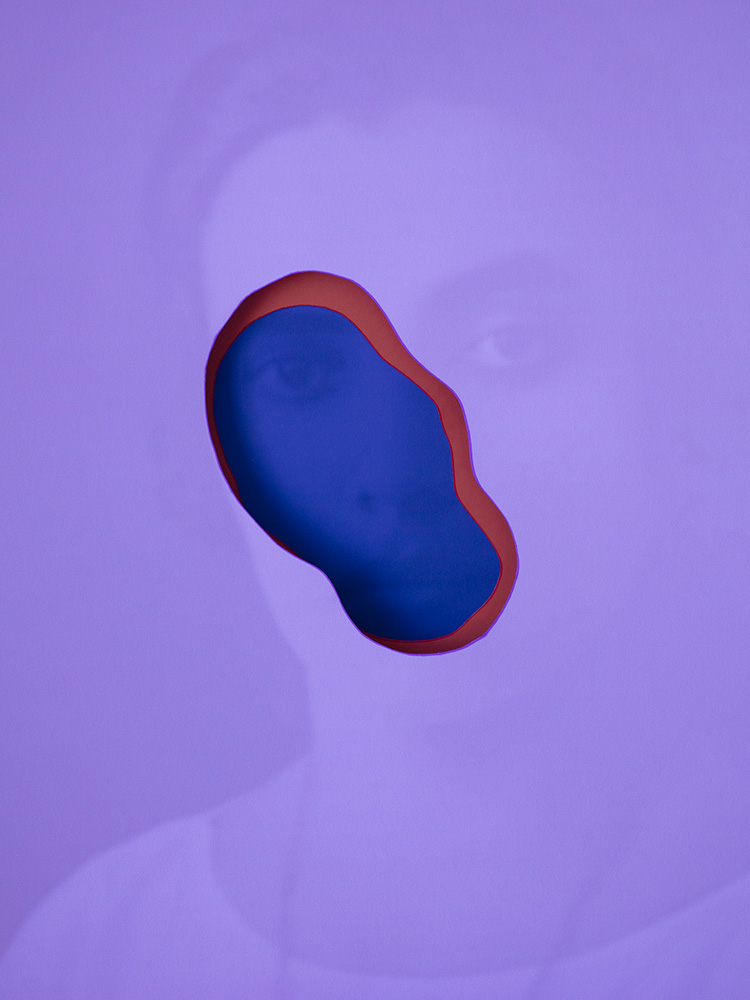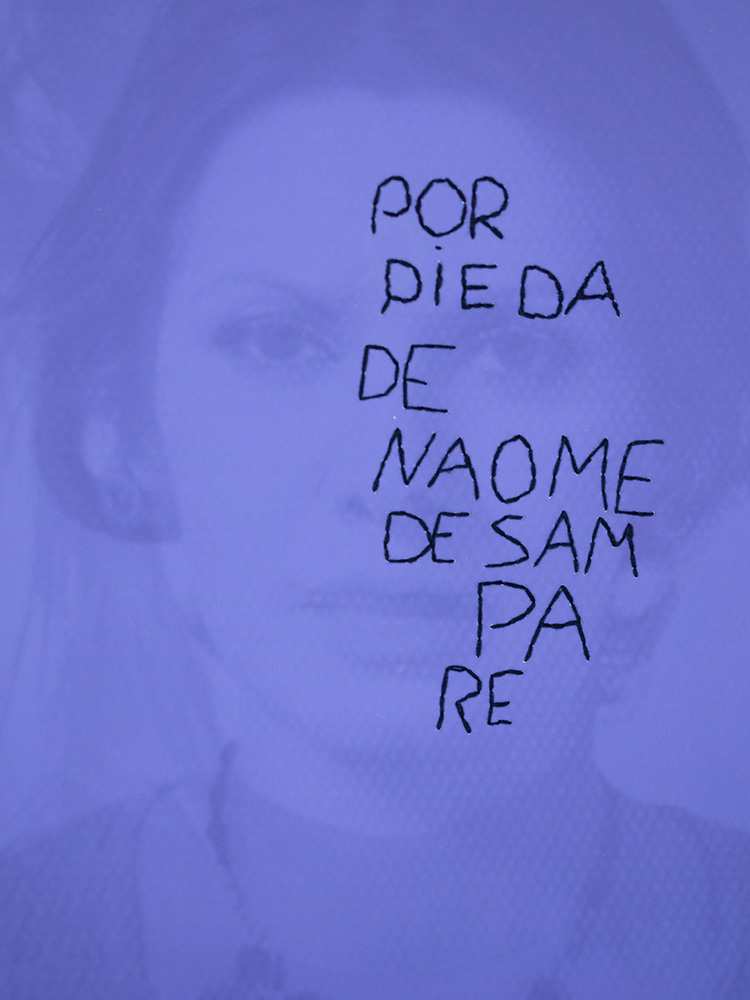Womanhood Week: Juliana Sicoli
This week we will dive into the feminine universe, addressing topics that are often controversial and stigmatized. We address violence, sexism and misogyny through the work of Márcia Charnizon and Juliana Sicoli.
Juliana Sícoli (1983) is a visual artist, holding a postgraduate degree in Photography and Visual Arts from PUC/MG. Completing her studies in psychoanalysis, she weaves a unique narrative that intertwines photographs, paintings, and interventions with cutting and sewing materials. Her research, grounded in the quest to express the concerns that not only affect her but also resonate with so many other women, transcends the boundaries of the visible to unveil deeper emotional layers. In a continuous dialogue between image andpsyche, each work is a conscious expression – a visceral statement – of her commitment to investigate and bring reflections on the complexities that permeate the feminine universe.
Instagram: @jusicoli
Juliana Sícoli states about her work:
Quickly talking about my journey in art, I started out with photography back in 2008. I’ve always loved art, especially photography, so in that year I decided to quit a job at a big company in Brazil to do what really moves my soul. So I snapped shots of lots of families and women, did a bit of fashion photography too, and even worked for a magazine showcasing people’s lifestyles, but over time, I realized that what really got me going wasn’t just the final snap, with a pre-defined format, but the story behind it. I wanted to get to know those people better, connect with them, and try to capture something that truly reflected their essence and feelings.
Alongside all of this, I’ve always been pretty curious and interested in “existencial issues” and been very stimulated by my parents, both psychologists. So I decided to dive into psychoanalysis, cause I wanted a solid foundation for everything I was doing instinctively , and also to better understand my own uneasiness as a woman and a mother. And I not only got to understand myself better but also realized that a lot of what I felt, many other women felt too. And speaking about it gives us strength because we tap into the collective power, which is infinitely stronger.
For me, art serves as a channel through which I can express all of this in various ways.
What led you to work with photography? And what keeps you connected to it?
Photography attracted me due to its unique ability to capture a moment while simultaneously telling stories that provoke deep reflection. From the beginning, I saw it as a tool that goes beyond the visual, allowing me to explore the unconscious in a subtle way, like a window into emotional and psychic dimensions. What keeps me connected to photography is the possibility of working with layers of meaning, which not only appeal visually but also touch the invisible and the subjective.
How is the relationship between photography and psychoanalysis in your work?
Psychoanalysis provides a theoretical foundation to understand the unconscious dynamics that permeate both the creative process and the capturing of images. In my work, photography functions as a kind of mirror, where internal issues can be projected and analyzed. Just like psychoanalysis, which seeks to uncover deeper layers of the mind, my photographic practice aims to reveal what lies beneath what is captured by the lens. I explore themes from the feminine universe, such as desire, identity, pain, experiences, among others, using the image as an entry point for psychoanalytic reflection. The stitching in several photographs also supports this, especially for its symbolism of healing and mending, seeing scars with a new perspective that highlights the beauty and importance of lived experiences.
PLEASE DO NOT ABANDON ME
What led you to develop the series “I still speak” and “I exist between the sky and this silent dormancy”?
“Still I speak” was born from a reflection on the importance of finding one’s voice amidst silencing, especially for women throughout history. It is a series that addresses resistance and the need for expression in contexts where we are often erased or marginalized. The images reflect this desire to speak, to exist, even under completely unfavorable conditions. In this research, I found letters from women in the past century who were institutionalized in asylums without having mental issues, simply for questioning the rules imposed by their families or husbands. I sew excerpts from these letters onto the images. More than denouncing what happened during that historical period, I am also addressing the present day. Whether in asylums or not, using different tools, the attempts to erase and silence women continue, and we must fight for our right to speak and exist. It’s a daily struggle.
“I exist between sky and silence” is a continuation of the previous series, where I make cuts in the photographs using a scalpel, then reassemble the images by mixing faces, where one complements the other, as it should be in the world of women. Each of us, even with flaws and shortcomings, are essential pieces in a mosaic to support the collective.
RECONSIDER THE ACT OF VIOLENCE YOU COMMITTED AGAINST YOUR UNMARRIED
DAUGHTER
How do you think photography can help in the discussion of issues related to women?
Photography has the power to give visibility to the nuances of female experiences. It can deconstruct stereotypes and propose new ways of viewing femininity, going beyond the superficial representations we often see in the media. In my work, I try to use photography as a tool to question social roles and explore emotions that are often sidelined. It enables a kind of visual dialogue about what it means to be a woman in a world where our voices are often silenced or distorted.
THE UNFORTUNATE ONES WHO COME HERE PROTEST IN VAIN. I SUFFER FROM NOTHING.
HAVE COMPASSION FOR THIS POOR UNFORTUNATE
Still I speak (2022)
By Eder Chiodetto (curator)
“Juliana Sícoli has been interested in existential inquiries since early on, particularly in researching the various forms of control through psychological parameters imposed as a result of socio- cultural construction. This construction invariably arises from distortions of society’s hierarchical games, particularly stemming from its patriarchal and sexist structure.
It’s now known that one way to restrict women’s rights in certain periods was to classify them as mentally disturbed, denying them the right to free will and forcing them to submit to the desires of their parents and husbands. If they didn’t fit into the imposed lifestyle model – often experiencing betrayals and domestic violence – they were taken to asylums as a form of punishment and silencing.
In one of her investigations – in psychiatric hospitals in Barbacena (MG), São Paulo, Rio de Janeiro, and Salvador – the artist came across letters that were written but never delivered, spanning from the 1940s to the 1980s. These letters touchingly reveal the distress, horror, mistreatment, and lack of humanity from both their families and those responsible for their “treatment.”
This dark side of patriarchy, long hidden and still veiled today, is the central theme of Juliana Sícoli’s work, which juxtaposes her own image with appropriated portraits of other women as a way to place herself in their shoes and bring them into the present time, as attempts to erase the past still resonate today. The artist created a series of unique works with various shades of purple, the color of the feminist struggle for equal rights used by English suffragettes since 1908, and also the color of bruises. In some of these works, phrases taken from the found letters were sewn on the back, making them illegible on the front of the artwork and only revealing themselves on the reverse side, as a metaphor for the cries that were commonly silenced – cries for help that went unanswered”
I WANT TO HAVE PROOF THAT THIS IS NOTHING BUT A HALLUCINATION OF MY
SENSES. THANKS
DO NOT THINK THAT I WILL SUBMIT TO LIVING IN THE SULTAN’S HOME. THE SEPARATION
STILL STANDS
THIS IS WHAT YOUR UNGRATEFUL BETRAYAL HAS REDUCED ME TO
Born in the Northeast of Brazil and based in São Paulo, Ana Leal is an artist who works primarily with photography. Leal investigates ephemerality and impermanence through records of the minutiae of nature and everyday life. With a strong influence of minimalism and impressionism, her works dialogue with abstraction and have a strong poetic charge.
Leal is a Gold Award winner at the 2020 TIFA and the 15th Julia Margaret Cameron Award Winner in the abstract category. She also received a Bronze Medal at the ND Awards 2021 and Honorable Mentions at the IPA 2021, Rotterdam Photo 2021, Prix de La Photographie Paris 2019, and The 15th Pollux Awards. She completed her MFA at the Miami International University of Arts and Design (2018) and the Professional Photography Course at the Pan-American School in São Paulo (2013). Her work is part of the Florida Museum of Photographic Arts – FMoPA collection.
Instagram:@analealphoto
Posts on Lenscratch may not be reproduced without the permission of the Lenscratch staff and the photographer.
Recommended
-
Ricardo Miguel Hernández: When the memory turns to dust and Beyond PainNovember 28th, 2025
-
Pamela Landau Connolly: Columbus DriveNovember 26th, 2025
-
KELIY ANDERSON-STALEY: Wilderness No longer at the Edge of ThingsNovember 19th, 2025
-
Jackie Mulder: Thought TrailsNovember 18th, 2025
-
Accidental Evidence: Mike Mandel and Chantal ZakariOctober 22nd, 2025


































































